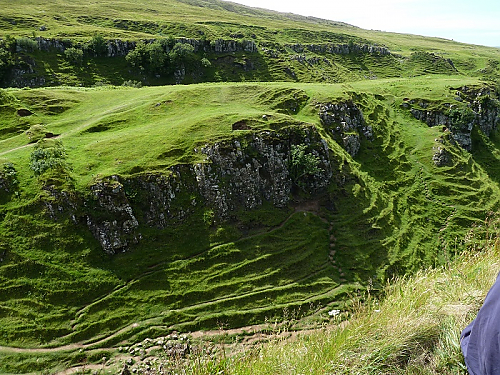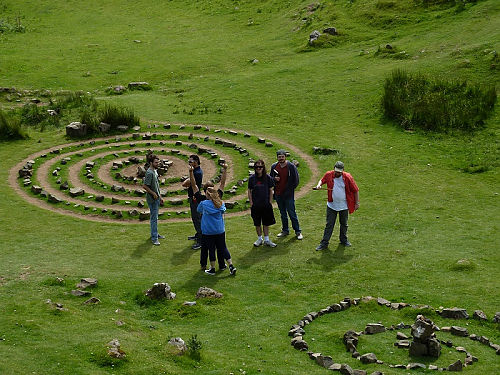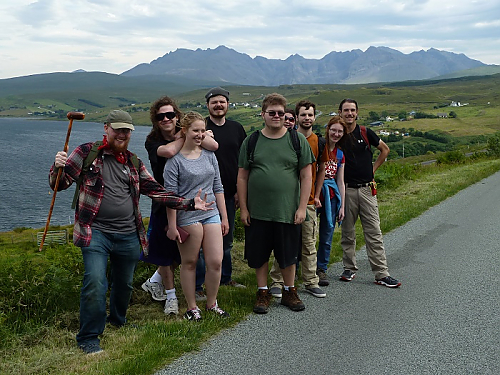July 21: Tour of the Isle of Skye
Our bus driver and guide, Stuart, a native of the Isle of Skye from the village of Elgol, took us all on a tour of the island today, and we couldn’t have asked for more gorgeous mid-summer weather. The Winged Isle, or Isle of Mist, showed no signs of any of the mist or rain for which it is famous —although the wind was quite chilly and brisk at higher elevations. We initially travelled north east to the town of Portree, which sits above a natural harbor with views out to the Isle of Raasay. As our guide explained, Portree was initially called Kiltaraglen, and it was renamed Portree, or Port of the King, after King James V visited the island in 1540—demanding allegiance from the clans. The harbor is picturesque—with colorfully painted residences overlooking the water and a variety of gift shops and cafes. The students had the opportunity to roam around the town for an hour, which gave them a different perspective of what life might be like on Skye compared to the village of Carbost where we are currently staying. The consensus amongst the students seemed to be, “I could live here!” But Stuart was quick to point out that the mediterranean-like weather we were currently experiencing was a bit of an anomaly on Skye.
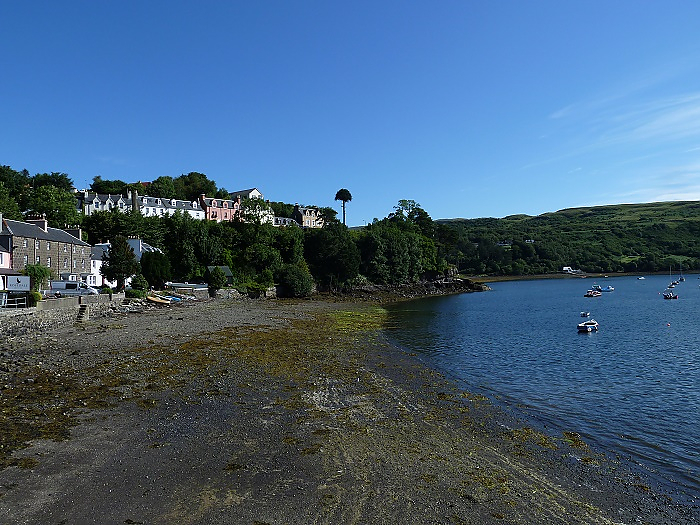
From Portree, we travelled to Trotternish, Skye’s largest peninsula, where we encountered the Old Man of Storr, a 50 metre high pinnacle pointing skywards and visible for miles around. Like most famous landmarks on Skye, there is generally a story or legend behind each one of them. In the case of Storr, legend has it that the old man and his wife (a less prominent rock formation adjacent to the pinnacle) were turned into stone because they witnessed something they were not meant to see.
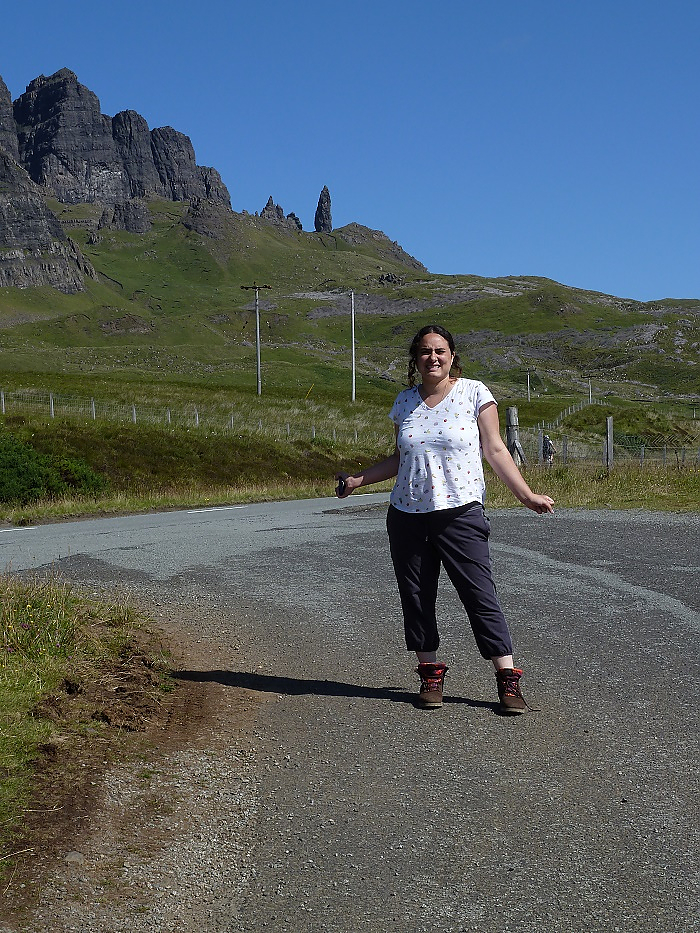
Our next stops on the tour were the Kilt Rock and the Quiraing, where most of us stopped for lunch. The Kilt Rock is a long stretch of coastline where the cliffs have a kilt like appearance and where the haunting sound of bagpipes can be heard and perhaps best appreciated in the island air. The Quiraing, which is situated at the northern most point of the Totternish peninsula, is an assortment of breathtaking rock formations that descend into a deep valley below. The Quiraing is associated with legends of giants, who were believed to inhabit secret spaces within the rocks, which could only be accessed through the narrowest of openings.
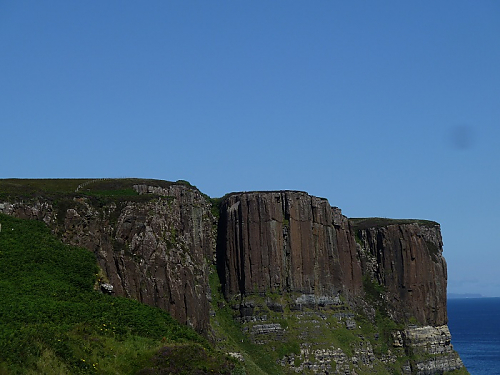
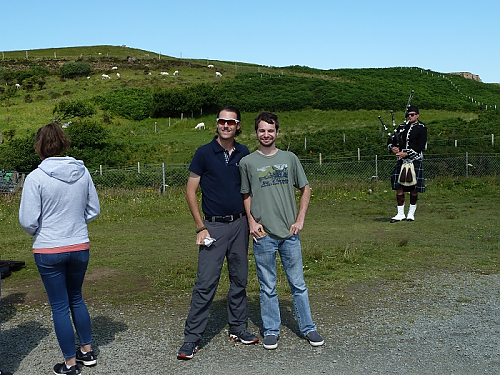

On our way back to Carbost, students had the opportunity to explore the Fairy Glen and catch a glimpse of Dunvegan castle, which to this day is owned and inhabited by the Chief of the clan MacLeod. As our guide explained, the MacLeod and MacDonald clans are the only clans that own land on the Isle of Skye. The Fairy Glen (so named because its magical appearance suggests it could only have been created and/or inhabited by fairies) is surrounded by waterfalls and strange rock formations, such as the Castle Ewen (fairy castle) that overlooks the site.
One would be hard pressed to think of a more fitting conclusion to our experience of the wilds and wonders of Skye than the assorted waterfalls, sea cliffs, ancient landslips, weird pinnacles, and castles we witnessed today….
